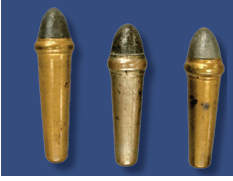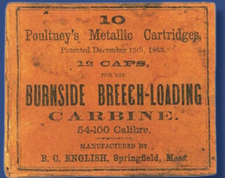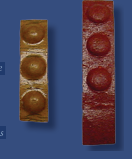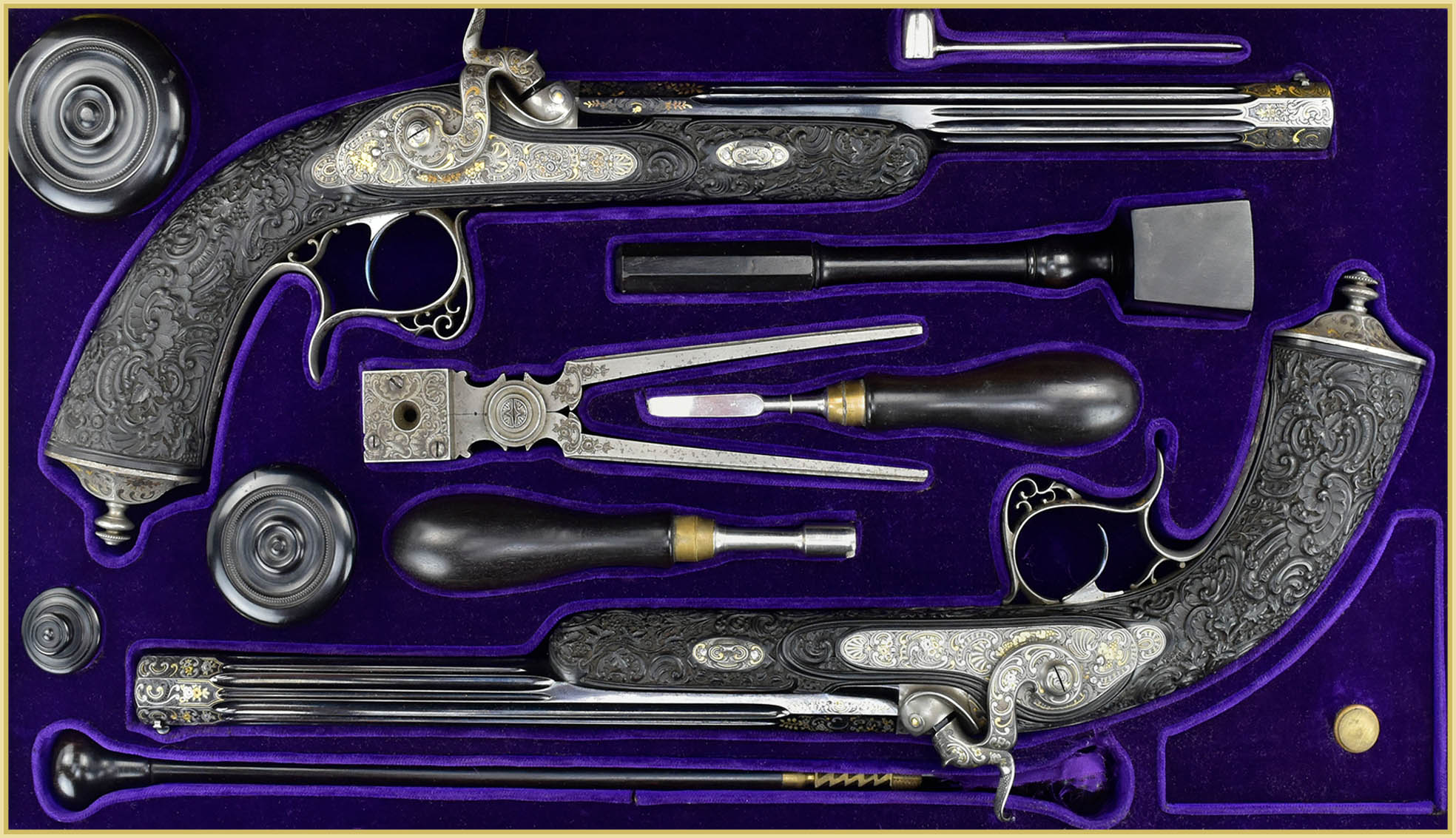The Cartridge Hound – Burnside Cartridge
The Burnside cartridge was truly revolutionary. For the first time, all of the issues of the day were addressed.
- The thin, brass case transitioned the breech gap, providing an effective gas seal.
- The tapered case made the extraction of the fired case relatively easy.
- There was a lubricant-filled ring around the base of the bullet
- The cartridge was waterproof
- The cases were reloadable. The cartridges were packed in units of ten. Each packet included 12 percussion caps.
Cartridges were supplied by The Burnside Rifle Company, although it is not known whether they actually produced the cartridges or whether they were contracted. It is known that the B.C. English Company of Springfield, Mass., did manufacture a small number of cartridges using wrapped brass foil instead of drawn brass cases.

Figure 1- Three basic Burnside Cartridges. On the left, the very rare, longer case version for the 1st model and very early 2nd model Burnside carbines. In the middle, a tinned-case version for navy use, on the right, a common Burnside cartridge (there are minor variations, with “cupped bases”

Figure 2- A specimen of the rare wrapped brass Poultney Patent Burnside cartridge by B.C.English of Springfield, Mass.

Figure 3- Packaging for the Burnside cartridge – the green-labeled packet is rare. The contents are similar to those of the more common brown packet.

Figure 4- A rare packet label for the Poultney Patent cartridge by B.C.English.

Figure 5- Although the 1st Model Burnside was fitted with the Maynard tape primer device, normal Maynard primers (.226″ width) are too wide to fit the slot. The narrower tape (.195″ width), shown here next to a regular Maynard tape segment, is required for the Burnside.

